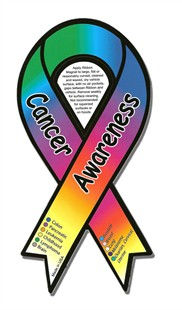Common myths about cancer
- Dr. Guruprasad Bhat, Chief Medical Oncologist
- Oct 12, 2016
- 3 min read

Cancer is one of the most dreaded diseases which claim many lives every year. Nearly 50% of cancer in male patients are due smoking related, while 25% of cancer in female are tobacco related. In women, breast cancer, cervical cancer and ovarian cancer are most common, whereas men are more susceptible to oral cancers, lung cancer, intestinal malignancies and prostate cancers.
The common questions/myths which many people have about cancer are:
1. MYTH: CANCER IS CONTAGIOUS.
FACT: cancer is not contagious; it does not spread by touching cancer patients
2. MYTH: CANCER TREATMENT IS USUALLY WORSE THAN THE DISEASE.
FACT: Although cancer treatments, such as chemotherapy and radiation therapy, can cause unpleasant and sometimes serious side effects, recent advances have resulted in many drugs and radiation treatments that are much better tolerated than in the past. As a result, symptoms like severe nausea and vomiting, hair loss, and tissue damage are much less common these days.
3. MYTH: IF YOU HAVE A FAMILY HISTORY OF CANCER, YOU WILL GET IT TOO; THERE’S NOTHING YOU CAN DO ABOUT IT.
Although having a family history of cancer increases your risk of developing the disease, it is not a definite prediction of your future health. Only 5% of cancers are familial. In fact, an estimated 5 out of 10 cancers can be prevented by making simple lifestyle changes, such as eating a nutritious diet, maintaining a healthy weight, exercising, limiting alcoholic beverages, and avoiding tobacco products. 4. MYTH: THERE ARE NO SIGNS OR SYMPTOMS OF CANCER
FACT: For many cancers, there are warning signs and symptoms and these include • Abnormal lump. These can show up in the breast, testicles, neck, arm pit and extremities • Changes in your testicles. These can present as painless increase in size of one of the testis. • Changes in your restroom habits. These can present with blood in urine/stool, or increased frequency of urination in elderly, or Changes in your bowel habits, like constipation or diarrhea that won’t go away • Changes in your skin. These can present with in skin with unusual bleeding, scaling or sores that do not heal. Other signs include warts as well as moles that change in color, size or shape. • Indigestion or trouble swallowing. These can present with difficulty in swallowing initially for solid food, later for both solid and liquid diet. • Persistent cough or hoarseness. Persistent cough for more than 3 weeks, associated with wheezing, shortness of breath or coughing up blood are also symptoms of cancer. • Changes in your mouth. White patches inside your mouth or on your tongue may be pre-cancerous, especially if you use tobacco in any form. • Unexplained weight loss. If you are losing weight without changes in your diet or exercise habits then it may be a symptom of cancer. 5. MYTH: THERE IS JUST ONE TEST TO DETECT AND STAGE CANCER
FACT: each cancer has specific test for its diagnosis and to know where and all it has spread. For example • Breast cancer- after a thorough clinical examination by the doctor, each patient undergoes a mammogram. A mammogram is an X-ray of the breast. After this a biopsy is done, especially when clinical exam finds a breast abnormality or after an abnormal imaging test (mammogram/USG/MRI).
• Cervical cancer- in any elderly lady with abnormal vaginal bleeding, the first tests to be done after clinical examination is a PAP smear. When any of this is abnormal, the patient undergoes a biopsy for diagnosis. • Stomach/colonic cancer- in patients with symptoms of colonic/stomach cancer, the patient usually undergoes a endoscopy followed by biopsy for diagnosis.
Every year, World cancer day is celebrated in the month of February. This year, the tag line or theme of which is, “Not beyond Us” to emphasize that solutions exist and are reachable. This year’s World Cancer Day will be articulated around four key areas of focus: • Choosing healthy lives: Healthy lifestyle choices can lower the risk for cancer. They include avoiding tobacco, limiting alcohol consumption, eating right food and getting plenty of exercise.
• Delivering early detection: For many cancers, there are warning signs and symptoms and the benefits of early detection are indisputable
• Achieving cancer treatment for all
• Maximizing quality of life in cancer patients Healthy lifestyle, awareness and use of cancer vaccines (E.g.: for cervical cancer-HPV vaccines and liver cancer-hepatitis B vaccine), regular screening (E.g.; with mammogram, PAP smear) and early and prompt therapy (with chemotherapy, radiotherapy and surgery) will go a long way in alleviating the suffering from cancer.











Comments